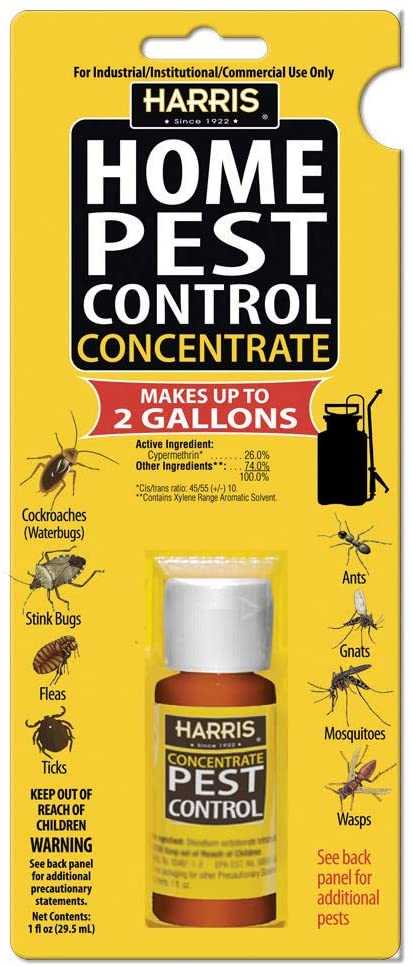Quality A1 Pest Control Services Charlotte - Safeguard Your Home
Quality A1 Pest Control Services Charlotte - Safeguard Your Home
Blog Article
Bed Bug Treatment Failure: Comparing Chemical Vs. Non-Chemical Solutions
In the realm of bug control, particularly when taking care of the relentless issue of bed bugs, the selection between chemical and non-chemical treatment solutions can be a critical one. Both techniques offer distinct advantages and disadvantages, influencing aspects such as performance, safety and security considerations, and overall expense. By examining the nuanced details of each method, a clearer understanding of which course to go after in attending to a bed pest invasion can be achieved.
Effectiveness of Chemical Therapies
Chemical treatments for bed bug invasions have been commonly recognized for their rapid and potent effectiveness in removing these bugs. When considering the effectiveness of chemical treatments, it is important to comprehend that they can supply a complete and fast service to a bed pest trouble. Specialist pest control specialists typically rely upon pesticides to target bed pests at various phases of their life cycle, including eggs, grownups, and nymphs. These chemicals generally function by interrupting the bed pests' nerves, resulting in paralysis and eventual death.
Moreover, chemical treatments have the benefit of using recurring impacts, meaning that they can continue to get rid of bed pests even after the initial application. This residual action is especially helpful in combating any possible re-infestations. Furthermore, the fast activity of chemical treatments can bring relief to people encountering extreme bed bug infestations, permitting them to gain back control of their space swiftly.
Safety Interest In Chemical Solutions
One essential aspect that calls for cautious factor to consider when using chemical solutions for bed bug treatment is making sure the security of owners and the atmosphere. Exposure to particular chemicals utilized in bed pest therapies can lead to breathing problems, skin inflammation, or various other adverse responses, especially in people with pre-existing conditions or level of sensitivities.
Furthermore, the environmental impact of chemical solutions is another substantial consideration. Some pesticides used in bed insect treatments may be unsafe to helpful insects, wild animals, and environments if they leach into the dirt or water systems. It is important to utilize chemical treatments carefully, following security guidelines, and taking into consideration much less hazardous alternatives to reduce these risks and make sure the effective and safe monitoring of bed pest infestations.
Advantages of Non-Chemical Techniques
Considering the prospective safety problems and environmental impact linked with chemical remedies for bed insect treatment, discovering non-chemical techniques presents exterminator prices a promising choice with a number of distinct advantages. Non-chemical therapies are ecologically pleasant, as they do not contribute to air or water air pollution, making them a sustainable option for bug control.
Furthermore, non-chemical solutions can be efficient in targeting bed insects, including hard-to-reach locations where chemical treatments might not penetrate. Methods such action pest control as heat treatment, vacuuming, vapor cleaning, and bed mattress coverings offer extensive eradication without the usage of harmful chemicals. Additionally, non-chemical methods can be much less turbulent, requiring very little preparation and enabling quicker reentry into treated locations. In general, opting for non-chemical bed insect therapy approaches not only focuses on security and ecological defense but likewise makes sure reliable and comprehensive parasite control.
Limitations of Non-Chemical Treatments

Additionally, non-chemical therapies usually need several applications to attain successful eradication. This can be lengthy and may not constantly assure total removal of all bed pests and their eggs, particularly in hard-to-reach or concealed places.
Furthermore, the success of non-chemical treatments heavily depends on website link appropriate application and thoroughness, which can be challenging for people without specialist competence. Insufficient application of non-chemical techniques may lead to incomplete elimination, causing relentless invasions and the demand for added therapies.
Consequently, while non-chemical therapies have their benefits, it is important to recognize these constraints and consider them when establishing one of the most reliable method for handling bed insect invasions.
Cost Contrast: Chemical Vs. Non-Chemical Options
Offered the constraints associated with non-chemical therapies, an important facet to assess in the context of bed insect management is the price comparison between chemical and non-chemical options. In comparison, non-chemical treatments like warm therapy or vapor can be much more expensive, with costs varying from $1,000 to $6,000 for a whole home. While the first cost of chemical therapies may appear reduced, multiple treatments might be required to completely remove the problem, possibly enhancing the total expense.
Verdict

Taking into consideration the potential security problems and environmental influence associated with chemical services for bed insect therapy, checking out non-chemical approaches provides an appealing choice with numerous distinct benefits.Provided the constraints linked with non-chemical therapies, an important element to evaluate in the context of bed insect monitoring is the price contrast in between chemical and non-chemical alternatives. In contrast, non-chemical treatments like warm treatment or vapor can be a lot more costly, with prices varying from $1,000 to $6,000 for a whole home. While the first price of chemical therapies might appear reduced, numerous therapies might be needed to completely get rid of the problem, possibly boosting the general expense.In final thought, when contrasting chemical and non-chemical bed insect treatment options, it is necessary to think about efficiency, security, benefits, limitations, and price.
Report this page